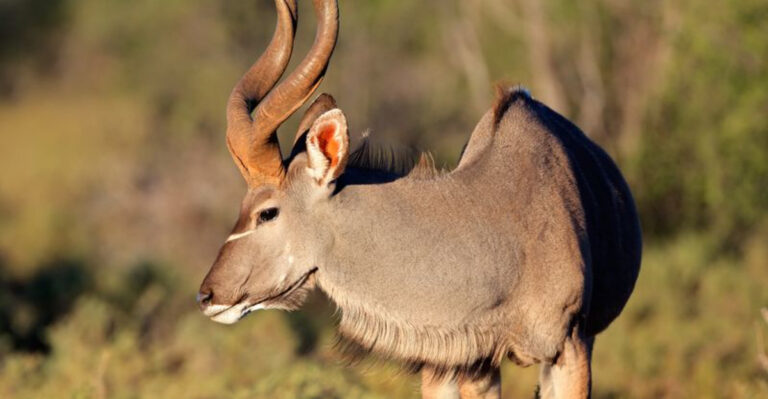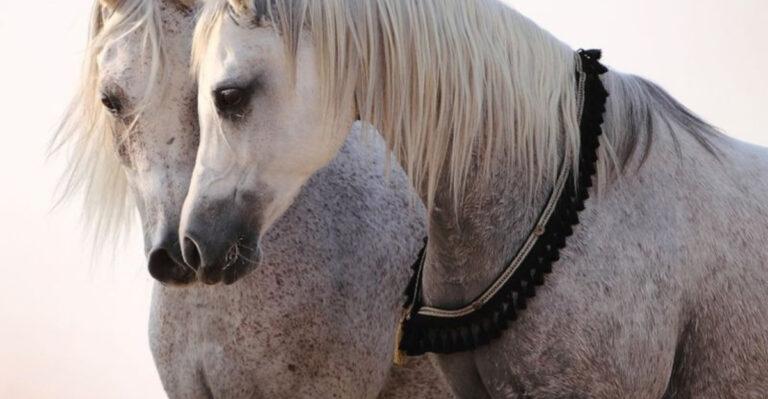15 Birds That Make Backyard Birdwatching An Unforgettable Experience
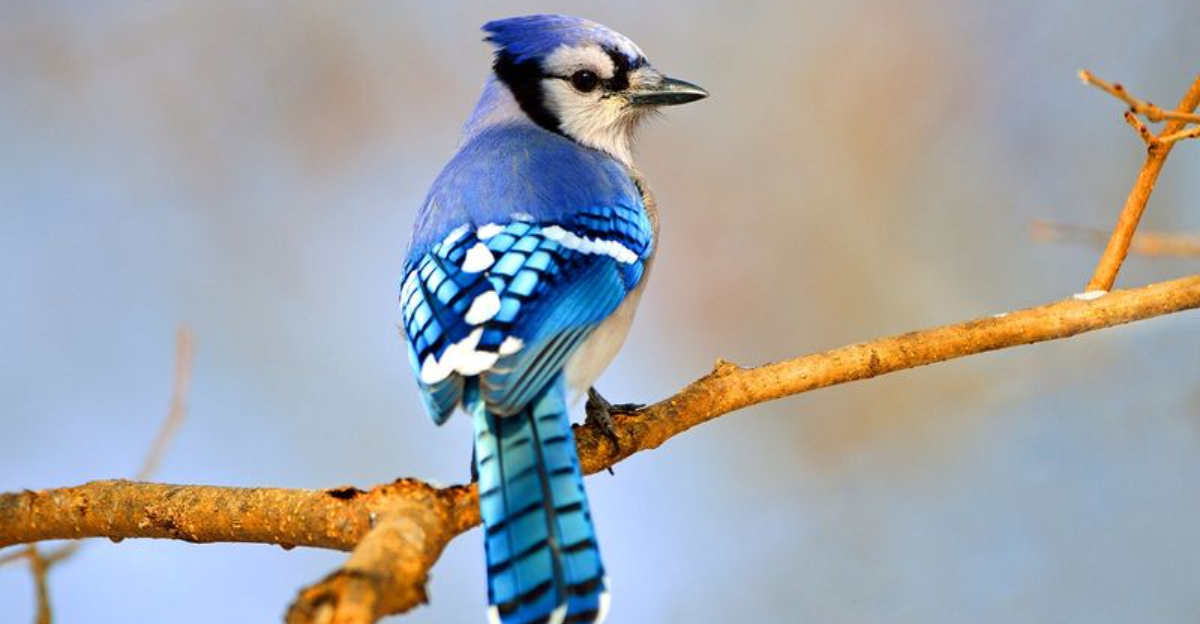
Backyard birdwatching offers a magical window into the natural world right from your home. These feathered visitors bring color, song, and fascinating behaviors that can turn an ordinary day into something special.
Whether you’re a seasoned birder or just starting out, spotting these winged wonders creates moments of joy and connection with nature that stay with you long after they’ve flown away.
1. Northern Cardinal’s Crimson Splendor
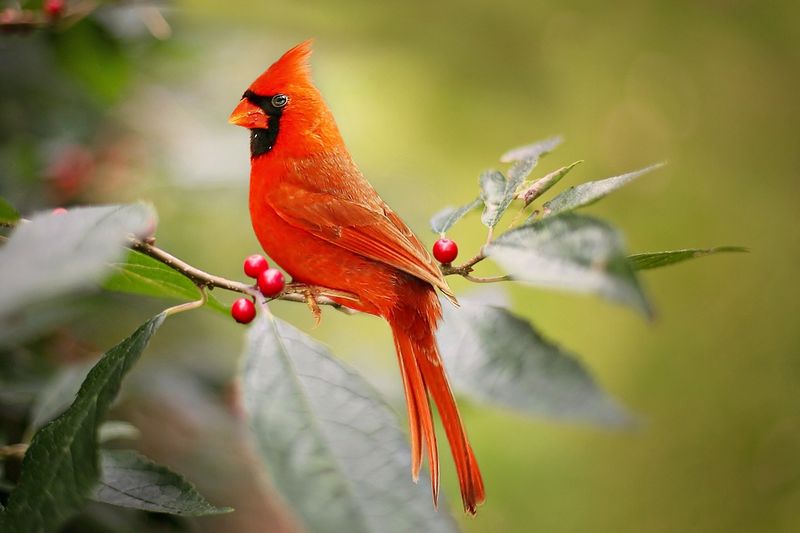
The striking red plumage of male Northern Cardinals creates an instant wow-factor against winter snow or summer greenery. Females sport a more subtle reddish-brown coloration with hints of red on their crest, tail, and wings.
These year-round residents don’t migrate, offering reliable beauty through all seasons. Their clear, whistling songs often start before dawn and continue into evening hours.
Cardinals readily visit feeders stocked with sunflower seeds, making them easy to attract. They mate for life, and you might spot devoted pairs feeding each other seeds during courtship – a heartwarming backyard romance unfolding before your eyes!
2. Hummingbird’s Aerial Magic
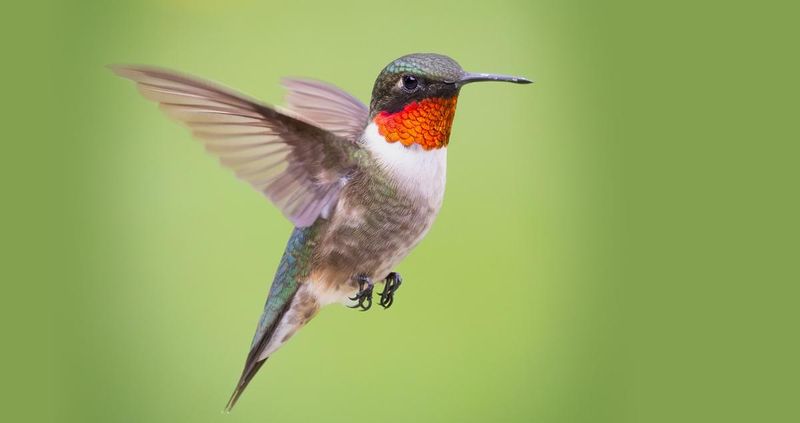
Ruby-throated Hummingbirds transform backyards into theaters of aerial wonder. Weighing less than a penny, these tiny marvels beat their wings 50-80 times per second, creating the distinctive humming sound that gives them their name.
Males flash iridescent ruby-red throat patches that appear black until sunlight hits at just the right angle – nature’s perfect magic trick! Their flying abilities outclass all other birds: they can hover perfectly still, fly backward, upside down, and even upside down backward.
Hummingbirds possess incredible memories, remembering every flower and feeder in their territory. Hang a nectar feeder with a 4:1 water-to-sugar ratio, and prepare to be mesmerized by their zippy antics.
3. Blue Jay’s Bold Personality
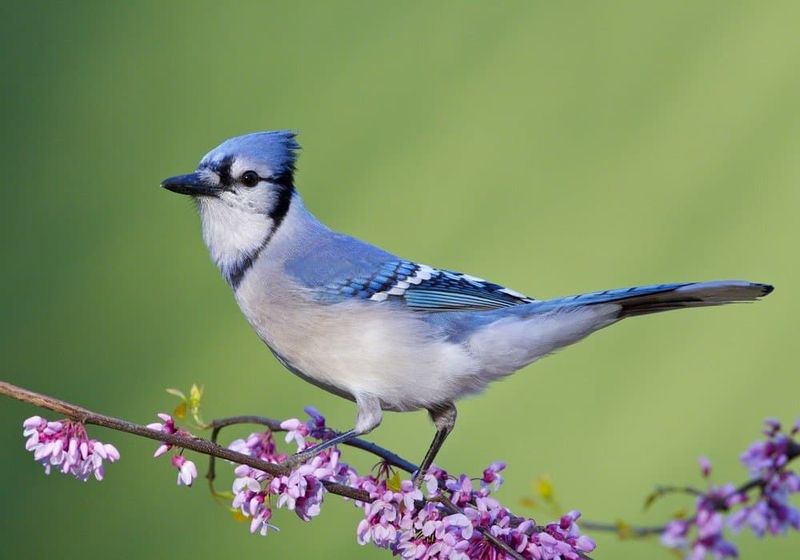
Blue Jays command attention with their vibrant blue-and-white plumage and distinctive crest. These intelligent birds belong to the crow family and possess remarkable problem-solving abilities – they’ll figure out your feeder mechanisms in no time!
Famous for their loud, raucous calls, Blue Jays serve as the neighborhood watch, alerting other birds to potential dangers. They’re also skilled mimics, capable of imitating hawks and other bird species.
While sometimes considered bullies at feeders, Blue Jays play vital ecological roles by planting thousands of oak trees. They collect acorns, bury them for later, and inevitably forget some – nature’s accidental gardeners at work.
4. Goldfinch’s Sunshine Display
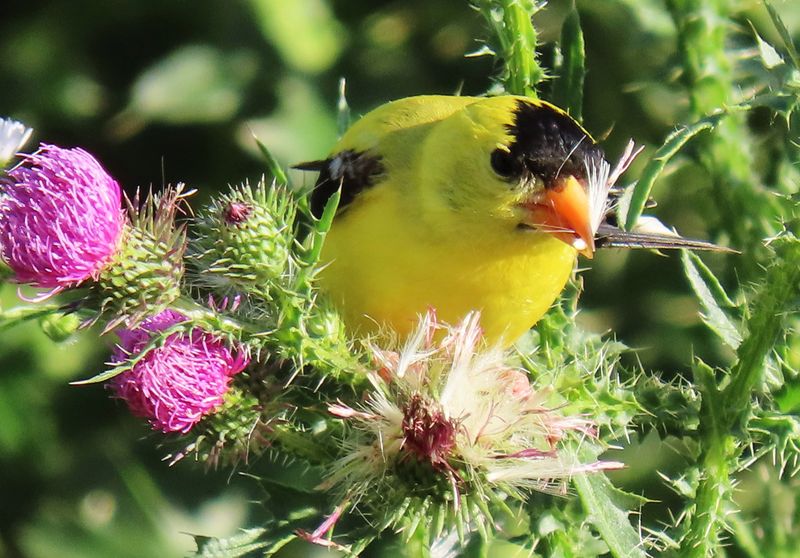
American Goldfinches bring bursts of sunshine yellow to summer gardens. Males transform dramatically with seasons – drab olive-brown in winter to brilliant lemon-yellow in breeding season, nature’s avian wardrobe change.
Their bouncy flight pattern resembles an undulating roller coaster as they call a cheerful “po-ta-to-chip” while soaring between perches. Strict vegetarians, goldfinches feast primarily on seeds, making them easy to attract with nyjer or sunflower offerings.
Unlike many birds, goldfinches wait until mid-to-late summer to nest, timing their breeding season perfectly with thistle plants. The fluffy thistle down provides ideal nesting material and the seeds feed their young – a perfectly synchronized natural strategy.
5. Chickadee’s Friendly Charm
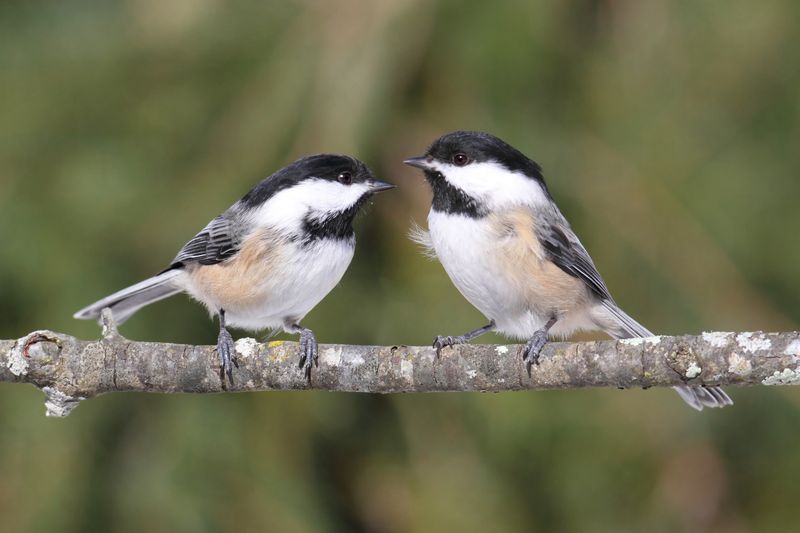
Black-capped Chickadees combine adorable looks with fearless personalities. Their distinctive black cap and bib contrast sharply with white cheeks and gray backs, creating a dapper appearance despite their tiny size.
Famous for their “chick-a-dee-dee-dee” call, these birds actually add more “dees” when alerting others to danger – the more dees, the greater the threat! Their remarkable metabolism allows them to lower body temperature during cold nights, conserving energy through controlled hypothermia.
Chickadees may be the friendliest birds in your yard, often landing on outstretched hands for seeds after some patient training. Their curious, bold nature makes them perfect introduction birds for children just discovering the joys of backyard birdwatching.
6. Woodpecker’s Rhythmic Drumming
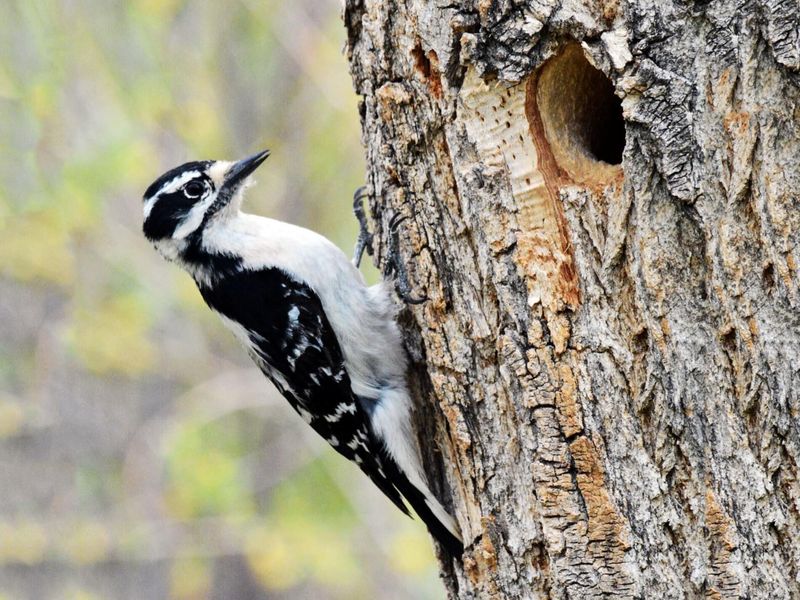
Downy Woodpeckers bring percussion and personality to backyard bird scenes. As North America’s smallest woodpeckers, these black-and-white birds with males sporting a small red patch create distinctive drumming patterns on trees and occasionally gutters or siding.
Their specialized skull structure absorbs shock while drumming, preventing brain damage. Downy Woodpeckers possess incredibly long tongues that wrap around their skulls when retracted – a bizarre but brilliant adaptation for extracting insects from bark crevices.
Year-round residents in most areas, these industrious birds excavate new nesting cavities each spring, creating future homes for chickadees, wrens, and other cavity-nesters. Attract them with suet feeders, especially in winter when their insect prey becomes scarce.
7. Robin’s Spring Announcement
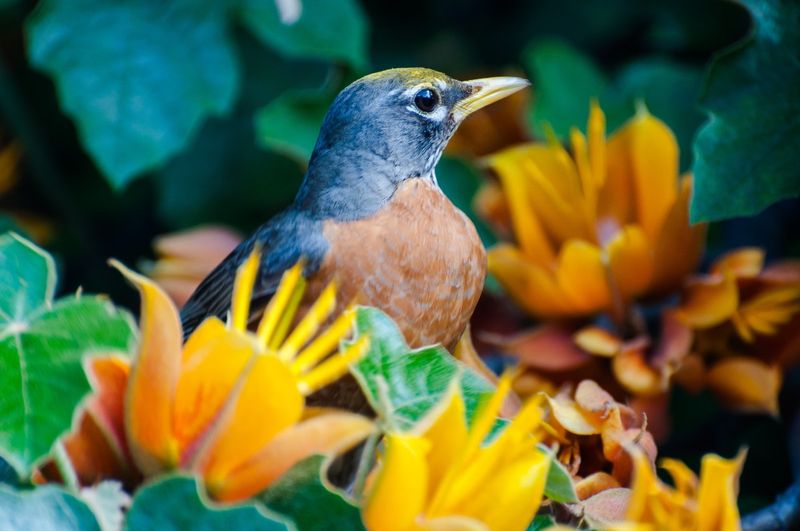
American Robins herald spring’s arrival with their cheerful caroling and bustling activity. Their rusty-orange breasts, gray backs, and white eye rings create an instantly recognizable profile as they hop across lawns hunting for worms.
Robins possess amazing hunting skills – they can actually see worms moving underground! That head-tilting behavior isn’t about listening but using specialized vision to detect subtle soil movements.
While we associate them with spring, many robins don’t actually migrate far, instead forming winter flocks and switching from worms to berries. Their beautiful blue eggs have spawned a color name, and a single robin family might raise three broods in one season – producing up to twelve youngsters from spring through summer.
8. Oriole’s Orange Brilliance

Baltimore Orioles flash through trees like tropical treasures, their brilliant orange-and-black plumage seeming almost out of place in northern landscapes. Males sport the brightest colors, while females show more subtle yellowish hues – both absolutely stunning against green foliage.
Master weavers, orioles create remarkable hanging nests that resemble small hammocks dangling from branch tips. These architectural marvels take up to a week to construct and withstand summer storms while safely housing their young.
Sweet-toothed by nature, orioles readily visit feeders offering grape jelly, orange halves, or sugar water. Their flute-like, whistling songs add musical magic to spring mornings. After brightening your summer, they’ll depart for wintering grounds in tropical forests from Mexico to South America.
9. Mourning Dove’s Gentle Presence
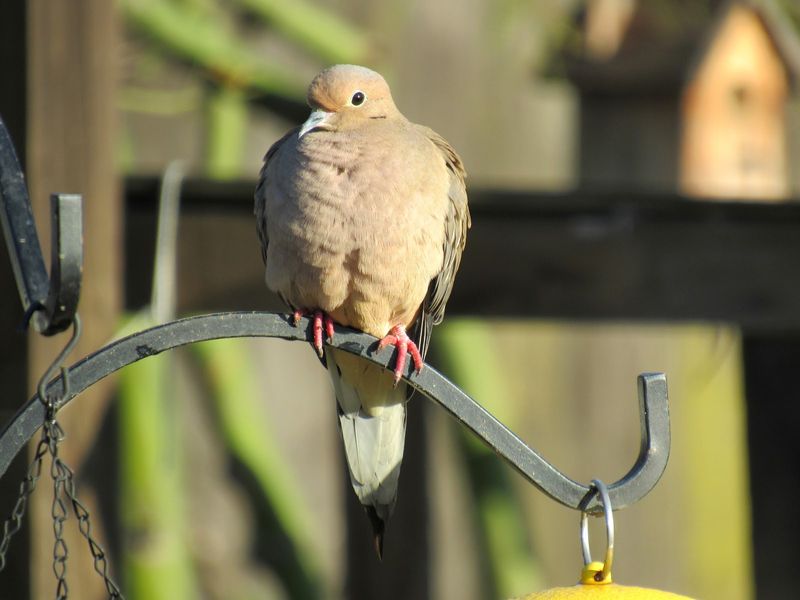
Mourning Doves create peaceful backyard moments with their soft cooing calls that sound almost like gentle laments. Their plump, tan bodies, small heads, and long, pointed tails make for an elegant silhouette whether perched on wires or foraging on the ground.
These devoted parents share incubation duties equally, with males typically sitting on nests during daylight hours. Both parents produce “crop milk” – a nutritious secretion fed to their young during early development.
Mourning Doves can drink without lifting their heads, simply sucking water through their bills like using a straw. Though appearing delicate, these birds are surprisingly hardy and prolific, potentially raising six broods annually in southern regions – more than any other native North American bird.
10. Nuthatch’s Upside-Down Antics

White-breasted Nuthatches delight observers with their gravity-defying habit of walking headfirst down tree trunks. This unique feeding strategy helps them find insects and seeds other birds miss while moving in the opposite direction.
Compact and cute with bluish-gray backs, black caps, and bright white faces and bellies, these birds move with jerky, comical motions. They got their name from wedging nuts and seeds into tree bark crevices and then “hatching” them open with their sharp bills.
Nuthatches store food for winter use and can remember thousands of hiding spots. Their nasal “yank-yank” calls announce their presence year-round. As non-migratory residents, they provide consistent entertainment even during winter months when many other species have departed.
11. Finch’s Melodious Gathering
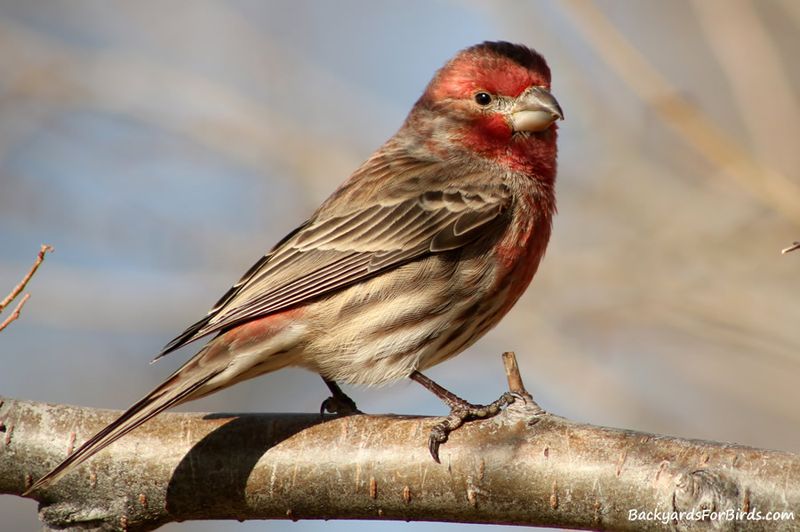
House Finches transform bird feeders into social gatherings filled with cheerful warbling songs. Males display varying shades of red from bright scarlet to orangish-yellow (depending on diet), while females wear streaked brown patterns – both bringing year-round color.
Originally native to western North America, these adaptable birds were released in New York in 1940 and rapidly colonized the entire eastern United States. Their beautiful, warbling songs often include mimicry of other birds’ calls, creating unique, improvisational melodies.
House Finches form tight social bonds, feeding in flocks and often returning to the same nesting areas year after year. They readily accept human proximity, sometimes building nests in wreaths on front doors or planters on porches – turning homeowners into accidental bird landlords.
12. Bluebird’s Azure Beauty
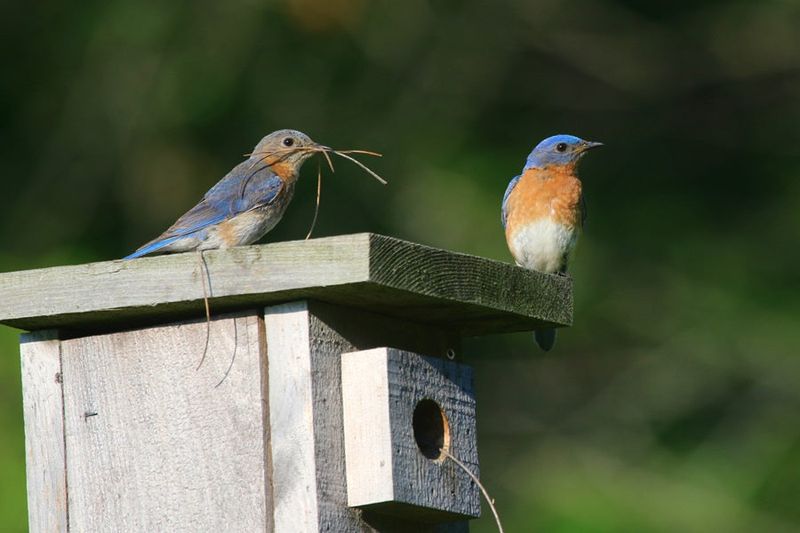
Eastern Bluebirds embody their name with males displaying brilliant azure blue upperparts contrasted against rusty orange breasts. Females show more subdued coloring but share the same enchanting charm that has made these birds beloved symbols of happiness.
Once declining due to habitat loss and competition from introduced species, bluebirds have rebounded thanks to dedicated conservation efforts and backyard nest box programs. They hunt with a distinctive technique – perching on low branches, scanning the ground, then swooping down to snatch insects.
Bluebirds form close family bonds, with older offspring often helping parents raise subsequent broods. Their soft, warbling songs sound like “chur-lee, chur-lee” – a gentle, rolling melody that perfectly matches their pleasant demeanor and brings daily joy to backyard birdwatchers.
13. Sparrow’s Subtle Elegance
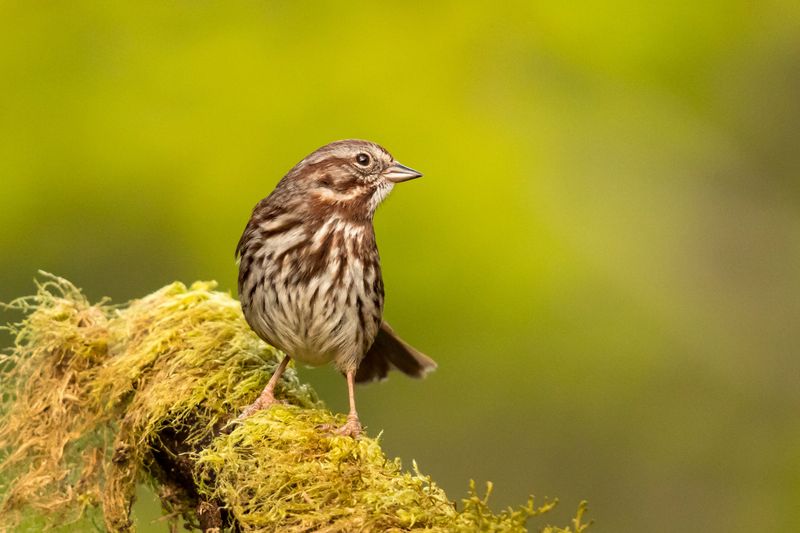
Song Sparrows prove that brown birds deserve attention too, with their richly patterned plumage and extraordinary vocal talents. Their streaked brown bodies feature a distinctive central breast spot – like a target for their impressive singing abilities.
These vocal virtuosos know up to 20 different variations of their species’ song, with males singing hundreds of times daily during breeding season. Each individual develops a unique repertoire, functioning almost like a personal signature.
Song Sparrows demonstrate remarkable adaptability, thriving in diverse habitats from marshes to suburban gardens across North America. They build well-hidden nests close to the ground and show incredible parental dedication. Watch for their characteristic tail-pumping motion as they forage through underbrush – a subtle but charming behavior from these backyard regulars.
14. Wren’s Exuberant Energy
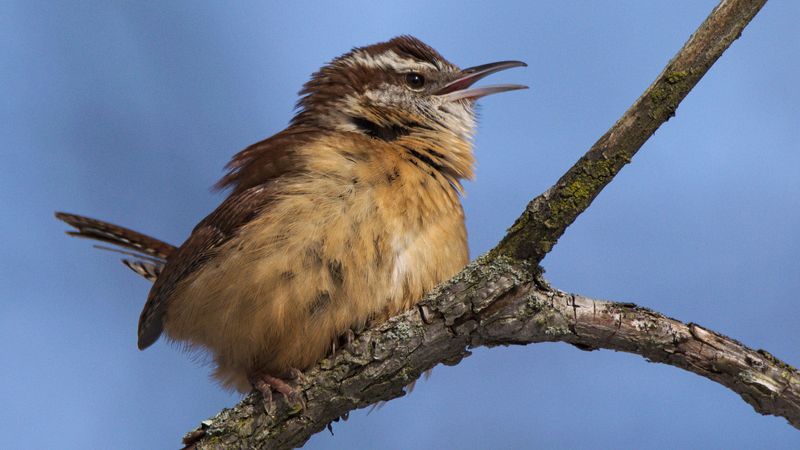
Carolina Wrens pack more personality into their tiny bodies than seems physically possible. These cinnamon-brown birds with distinctive white eyebrows bring non-stop energy and extraordinarily loud voices that belie their small size.
Males sing an exuberant “tea-kettle, tea-kettle, tea-kettle” that resonates throughout the neighborhood. A single wren might have over 40 song variations in its repertoire, belting them out with operatic enthusiasm year-round.
Notorious for nesting in bizarre locations, wrens might choose old shoes, mailboxes, flower pots, or abandoned vehicles. They form strong pair bonds, with partners staying together year-round and defending territories as a team. Their upturned tails, perpetual motion, and inquisitive nature create endless entertainment for backyard bird enthusiasts.
15. Junco’s Winter Wonder
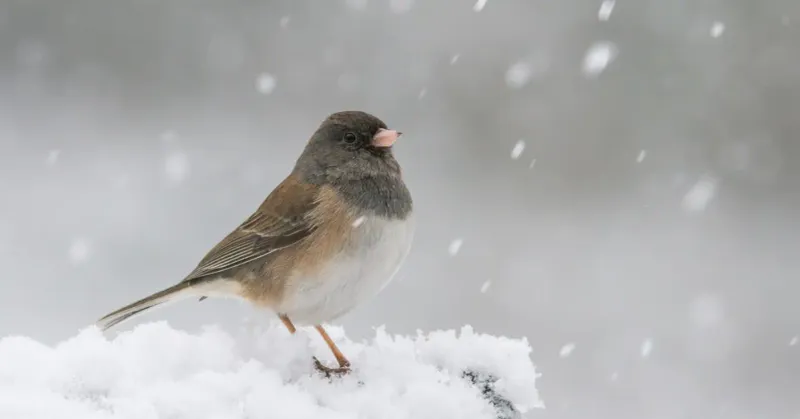
Dark-eyed Juncos arrive like winter’s welcome committee, earning their nickname “snowbirds” by appearing just as the first flakes fall in many regions. Their crisp slate-gray upper bodies and white bellies create a color pattern often described as “wearing a dark hood and cape.”
Juncos prefer to feed on the ground, where they perform a distinctive two-footed backward scratch to uncover hidden seeds. Their soft, twittering calls and pink bills add delightful details to their winter presence.
Different regional varieties show fascinating color variations – some sport rich chocolate-brown hoods instead of gray. Watching a flock of juncos forage beneath feeders during a snowfall creates a magical winter scene that transforms even the simplest backyard into a snow globe of natural beauty.
16. Towhee’s Ground-Scratching Show
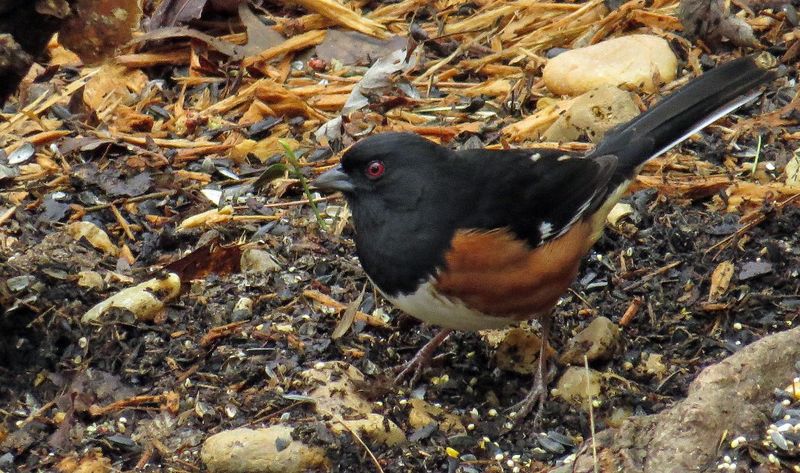
Eastern Towhees create backyard entertainment with their energetic two-footed backward scratching that sends leaves flying as they uncover hidden insects and seeds. Their striking color pattern – black upper parts, rusty sides, and white belly (males) or brown upper parts (females) – makes them stand out despite their sometimes secretive nature.
Towhees announce themselves with distinctive calls that sound like “drink-your-tea” with the final note trailing off. They spend most of their time on or near the ground, preferring brushy edges and thickets where they can quickly retreat for safety.
Leave some areas of your yard with leaf litter and undergrowth to attract these beautiful birds. Their cat-like “mewing” call notes and flash of white tail feathers when startled into flight add to their backyard appeal.



